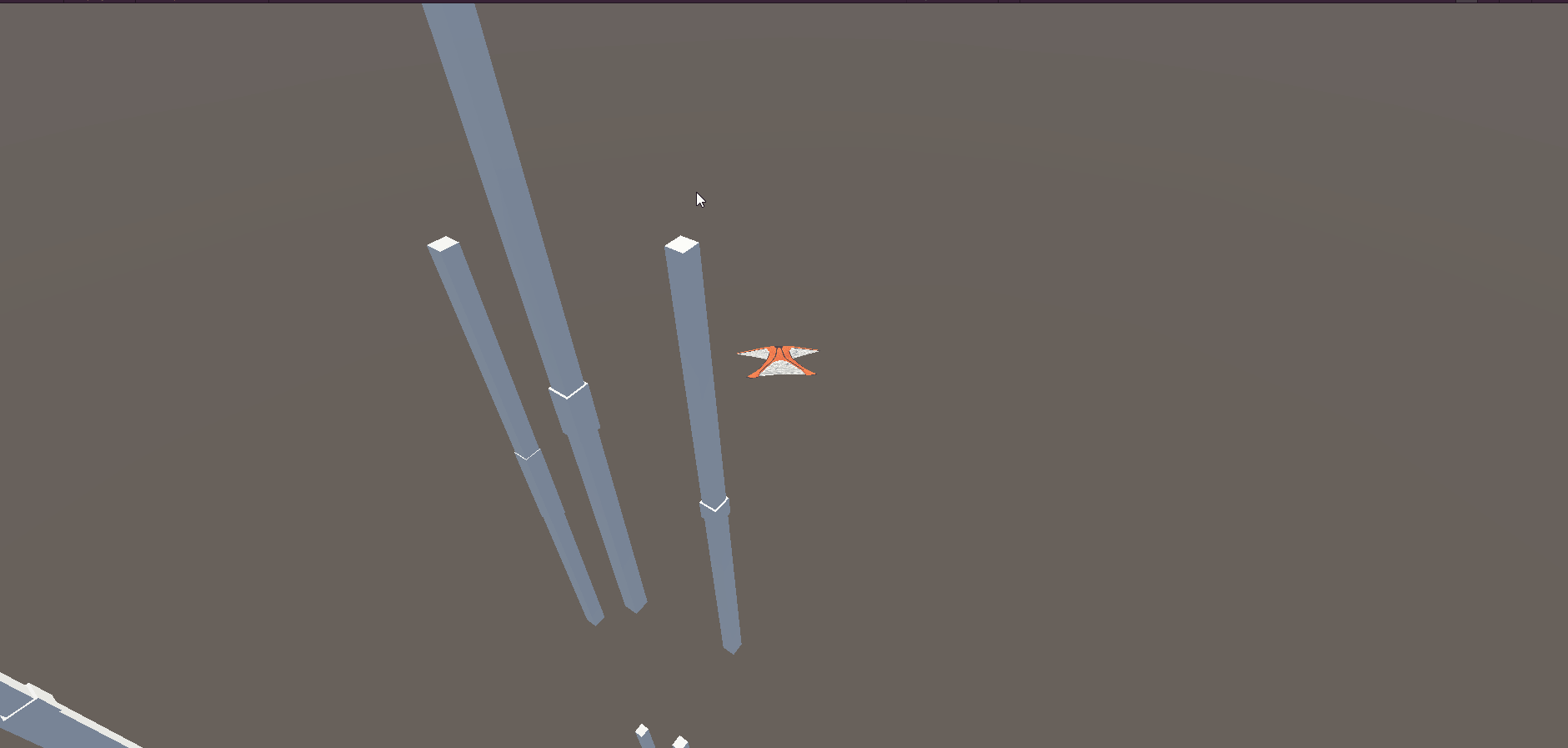Skybound
Concept
A fast paced wingsuit racing game where players compete in heart-pounding multiplayer races through a neon lit metropolis. The game targets mobile platforms and was developed around the theme of "extreme sports".
2024
18
4 weeks
Role & Contributions
Product Owner: Oversaw the game vision and scope, managed documentation, presented the game to stakeholders, and facilitated effective team communication and collaboration.
Finding the Concept
After receiving the theme of extreme sports, the team began brainstorming and pitching game ideas, generating a variety of creative and interesting concepts. While some team members felt the theme was restrictive and wanted to push the boundaries of what was allowed, I quickly pointed out that this was an excellent opportunity to practice adapting to a strict framework. Ultimately, the team voted to pursue the concept of skydive racing.
The programmers on the team were highly effective at creating early prototypes, which gave us a clearer understanding of the game and enabled us to move forward with the design process.

Presentations
I worked a lot with presenting the game during weekly reviews and the final pitch presentation to industry veterans. Before each presentation, I shared my draft with the team to ensure everyone was aligned and had the opportunity to provide feedback (though no changes were suggested). I took responsibility for making our game be presented in the best possible light while ensuring that at least some part of everyone's work was shown in the presentations.
Communication and Leadership
During this project, I recognized the importance of non-verbal cues that can be missed online. When I noticed a stressed teammate, I stepped in to help, even if it meant interrupting others. This required developing confidence, but I saw it as my responsibility to support the team.
There were many great ideas throughout the project, but I had to make tough decisions to prevent feature creep and have some less fun conversations with team mates. I handled this by explaining why certain ideas didn’t fit within our scope. I believe that in the end this never created any bad feelings in the team. Given more time, I would have liked to explore them further.
In the final days, I made key decisions on what features to prioritize. While UI and sound were not ready, I decided to pause those in favor of more pressing tasks, like respawning and set dressing.
Reflections
Looking back, there are a few things I would have done differently. For one, I would have pushed the team to make better use of the Jira board. While we tracked progress well during standups, it could sometimes be difficult to keep track of who was doing what. As the Product Owner, I would have appreciated having a clearer overview of everyone's tasks.
I also would have asked the artists to collaborate with the designers on creating a visual representation of how the final game would look. This would have helped eliminate confusion between the designers' vision and how the artists interpreted it.
In the next project, I’d like to ensure that everyone who can be available on Discord during work hours is ready to respond in case anyone has questions. Having that immediate access would have streamlined communication.
I would have pushed for quicker resolutions to questions between teammates early on. We only started doing this later in the process, but once everyone got used to seeking answers from one another, communication became much more efficient. In the beginning, many team members turned to me with questions, which often made me act as a middleman in discussions.
Lastly, for the next project, I’d want to establish a clearer pipeline for level design, particularly when it comes to set dressing. We ended up with a lot of assets but hadn’t clarified whether it was the responsibility of the level designer or the artist to set dress levels. In the end, both worked on set dressing, but a more defined process could have made this task more efficient.














